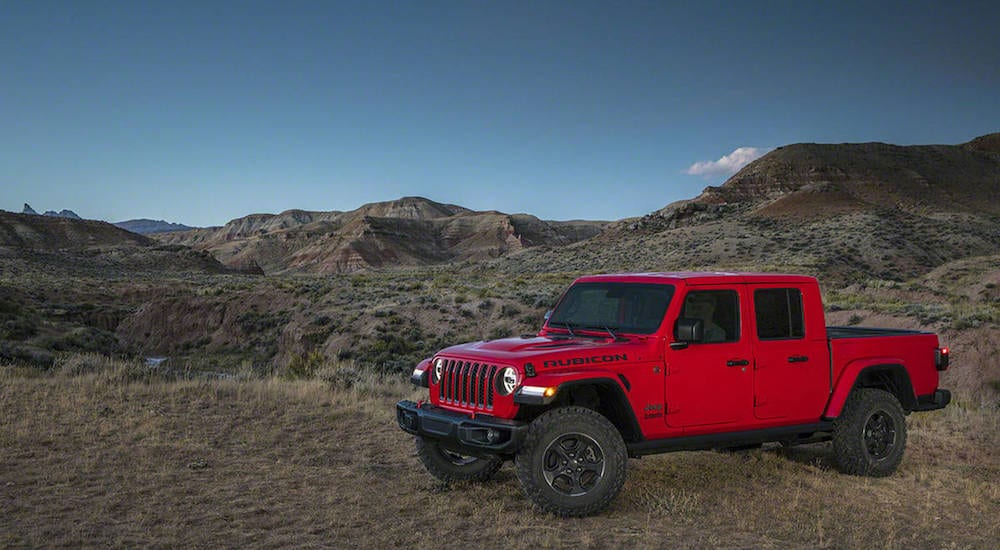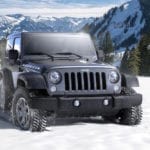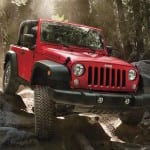Last month’s introduction of the 2020 Jeep Gladiator was the culmination of years worth of buzz, and decades worth of patience on the part of Jeep loyalists. Developed under the resurrected ‘Scrambler’ moniker, the biggest shock might have been the early release of the ‘Gladiator’ nameplate. And while the readiness of information on the internet, from spy photos to leaked images, did all but eliminate most of the surprise factor of the reveal, it did little to minimize the appeal.
Because (although we’ll touch further on design attributes in a bit) it bridges the inherent redundancy of Jeep’s J-Series and SUV offerings to the mindset of an earlier time. It reminds the unenlightened consumer that Jeep is capable of something more.
While it’s debatable, based on perspective, whether or not the ripe old age of 41-year qualifies me for ‘out-of-touch dinosaur’ status, it affords me certain touchpoint of relatability. For example, there are still many of us that remember when Jeep offered more than just Wranglers and SUV-fare. As a product of the ’80s, I can recall the decade’s early offerings of the Scrambler, and even the oft-forgotten Comanche that was served up a few years later. Growing up in a family of trucks, these were the closest that Jeep came to delivering models that I could picture in my own driveway while remaining different enough to appeal to my black sheep mentality. But while Jeep opted to discontinue their Jeep endeavors for the better part of three decades, a well-attuned eye could certainly key in on the occasional New England appearance of a classic Jeep truck; and I had an even closer opportunity for appreciation. As recently as the mid-nineties, a good friend of mine still made his way around town in a late-sixties Wag-Ten that he had inherited from his father. Ever-dependable as both an on and off-roader, its iconic design and rugged attitude made it a standout attention-grabber amidst the sea of sedans and SUVs of the time. I’m unsure of what became of it, but I still think of that truck often. And it’s that fondness which the Gladiator appeals to.
The 2020 Jeep Gladiator Design
To the naysayer (and if we’re honest with ourselves) the Gladiator is little more than a souped-up Wrangler with a bed. But that simplistic of an overview is a bit of a cop-out. As with most every offering worth its salt, the devil is in the details. So, which details of the Gladiator’s design managed to capture our attention at the time of reveal?
Addressing the aforementioned elephant in the room, it’s worth pointing out that the five-foot cargo bed is composed of steel. Why is this a big deal? Well, we’ve spent the last three model years inundated with discussion of weight reduction and material selection from the world’s largest truck-makers. As a result, it’s refreshing not to see a mishmash of composite materials employed in the construction of the gladiator. Not only does the rugged rigidity harken back to Jeep trucks of the past, but it’s a tiny little step towards making the Gladiator feel deserving of its moniker. And speaking of the bed, the three-stop position of the power-locking tailgate adds another degree of welcome-functionality to what (decades ago) might have been a fairly standard, even ‘vanilla’ offering. The fact that it’s also a wider tailgate than you’d see on the Wrangler is welcome from a cargo perspective, earning the Gladiator legitimate truck status while staying true to its Wrangler-esque image. Jeep may not have served up the six-foot bed that one would expect from other truck-makers, but you’ve got to start somewhere. That said, there are a number of upgradable options, from cargo management systems to lighting, to external power sources, that are worth exploring. So, right off the bat, the Gladiator feels like an amalgam of fresh new ideas incorporated into the tried-and-true.
And yes, elements of the Gladiator’s front fascia are evocative of its Wrangler stablemates, but – let’s be honest – that’s exactly what a loyalist wants. Setting apart the limitations of the seven-slot iconography, Jeep’s design philosophy has always felt cyclical – transitioning language from truck to SUV, and now back again.
So, we get a healthy dose of the familiar in terms of the Gladiator’s head and tail lamps, bumper (as well as the availability of Overland and Rubicon LED light and fog lamps). And of course, as one might expect, there is the familiar foldable windshield, as well as the lightweight removable doors. But the swept-back design of the top of the grille feels fresh, intended to improve overall aerodynamics. And airflow seems to be an area of focus in the overall design. Referring back to that seven-slot grille, each slot is slightly wider than the norm – enhancing air intake, in support of the Gladiator’s heightened towing capacity (but we’ll get to that later).
In terms of seating, the Gladiator doesn’t feel entirely dissimilar from a Wrangler aside from the promise of more legroom being offered for rear-seated passengers. In addition, those rear seats can be folded flat to create additional storage, as needed.
A common critique of the Wrangler has always been its use of hard (seemingly low-grade) plastics. The interior of the Gladiator reflects Jeep’s transition to soft-touch surfaces and smarter material choices that make it feel like a step up. Overall the cabin experience is consistent with the rest of the vehicle in the sense that it plays to strengths, both old and new. The latter comes in the dash, gauge clusters, and controls which stray little in the way of roundel-shaping but are accented by bezel finishes which only seem to be more visible as you ascend trim levels.
And what would a 2020 offering be without the latest in technologies? While the JK/JL debate of 2018 introduced its fair share of “how much does a Wrangler need” debate, there’s no escaping the fact that the expectations of today’s drivers have evolved significantly. This means the fusion of both manual controls and touchscreen interfaces, upsized displays and (of course) smartphone integration. In these regards, the Gladiator does not disappoint.
The display, which grounds the central control panel, measures a modest 5-inches when you opt for the standard setup but can be upgraded to 7 or 8.4-inches if one desires. The latter sizes come fully compatible with both Apple CarPlay and Android Auto, with additional USB ports (and optional 115-volt AC outlet) available for both front and rear passengers.
It’s also worth pointing out that the Rubicon trim level features a forward-facing camera hidden behind the grille’s middle slot, allowing for more insightful off-roading by increasing the visibility of potential obstacles. This, of course, is a luxury enhancement, on-top of the more standard rear backup camera which compliments additional safety and driver-assistive features such as Blind-Spot Monitoring, Rear Cross Path Detection, Adaptive Cruise Control, and Electronic Stability Control.
But what’s under the hood?
Well, the Gladiator features a 3.6-liter Pentastar V6 paired to either a six-speed manual transmission (standard) or an eight-speed automatic. The resulting 285 horsepower and 260 lb-ft of torque are confident and capable, with no risk of being overwhelming. And that’s the point: low-end torque is the focus here, supporting any towing or off-roading endeavors. And it appears that Jeep will be expanding their powertrain offerings to include a 3.0-liter EcoDiesel, already familiar to some Grand Cherokee and RAM 1500 owners.
With a payload capacity of up to 1600 pound and towing up to 7650 lbs (with the max towing capacity), the Gladiator throws up some impressive numbers, even when compared to more familiar midsize pickups like the Colorado or Tacoma. But combining all of the familiar off-roading characteristics of a Wrangler is what helps to make the Gladiator feel so palatable. The expected presence of four skid plates is welcome, while its Wrangler suspension represents prudent modifications for the midsize design. The result is a comfortable ride regardless of the terrain or load.
And drinking in this blend of new and familiar does little to distract from the point that the Gladiator remains the only open-air pickup truck on the American market. And it’s this distinction which drives the lion’s share of the Gladiator’s unique appeal. It’s just one of the many strengths of the Jeep design language that the truck benefits from, making it truly the sum of its parts.
And if you ask us, what a sum it is.





